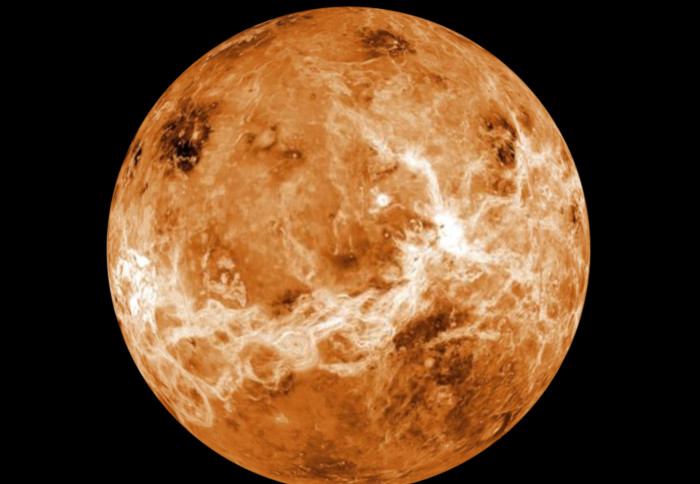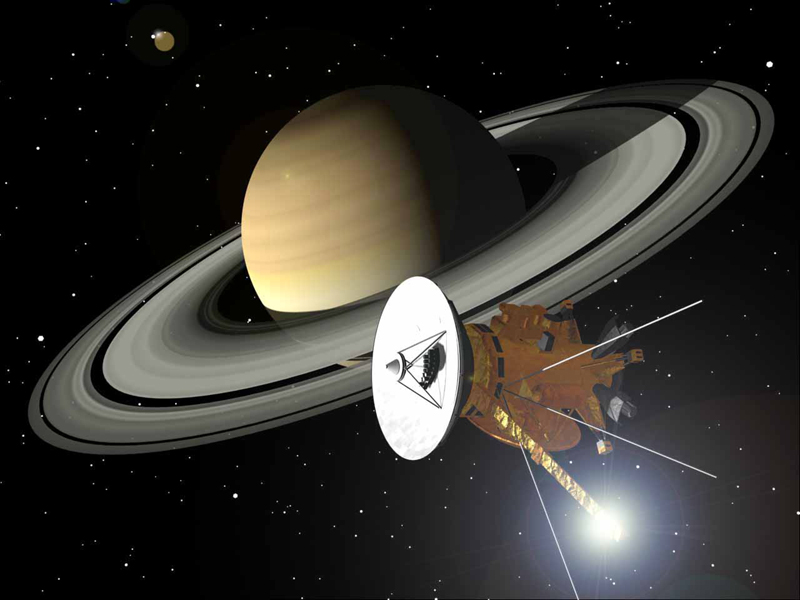Astro Advent 2022 17-25

Gerald Rhemann's photograph of Comet Leonard, taken Christmas night 2021, earned him the award of Astronomy Photographer of the Year 2022.
Christmas 2022 is past, but the daily "astro advent" images in the Astronomy Forum remain to enjoy. The final eight days – plus a Christmas bonus – included a fire rainbow, ice halos and a spectacular comet.
Only some of the images described below have links. However there's a link to the forum at the end of this article.
17 A total lunar eclipse in December 2022 also presented a lunar occultation of Mars. The occultation happened when both Mars and the Moon were lined up with the Earth and the Sun. The Moon hid Mars for about an hour as it passed between the Earth and the red planet.
18 A fire rainbow isn't really a rainbow, as it's not formed by raindrops. Also no fire is involved. However, it does look like flickering flames, and shows rainbow-like colors. Technically, it's known as a circumhorizontal arc. Fire rainbows occur when the Sun is at least 58 degrees high in a sky where there are cirrus clouds below. It's a rare sight, and most likely to be seen polar regions. However, this Fire Rainbow over West Virginia was seen near the North Fork Mountain in West Virginia, USA. [Image Credit: Christa Harbig]
19 Above the Milogradovka River in Primorsky Krai, Russia, Anton Komlev had an idea for a beautiful photo. He wanted to capture a splendid pine tree with the Central Band of the Milky Way behind it. He got all he wanted and more. "Colorful stars dot the distant background, with bright Altair visible on the upper left. Saturn was just over the horizon on the far left. Just beyond the Earth's atmosphere, seen in the upper right, an Earth-orbiting satellite left a streak during the 25-second exposure. Even the Earth's atmosphere itself was visible as green airglow across the image top. And finally, just by chance, there was a firefly. Do you see it? It blinked in yellow several times.” [APOD]
20 Multimedia artist Judy Schmidt put together a superb collection of 100 planetary nebulae in various colors. She says, "colors are aesthetic choices, especially since most planetary nebulas are imaged with narrowband filters." The nebulae aren't planets. They're formed when sunlike stars near the end of their lives begin to slough off their outer layers. William Herschel named them 300 years ago. Through his telescope, they looked like planets. One day our Sun will create such a nebula as it evolves into a white dwarf star.
21 Only when we're close to an equinox does the Sun set due west. After the northern hemisphere equinox, the sunset moves slowly northward until astronomical winter begins at the December solstice. At the Lawrence Hall of Science in Berkeley, California, USA, visitors can observe sunset on the day of a solstice using the Sunstones II structure. Sight lines let you see the Sun’s positioning. It was created by UC Berkeley astronomer David Cudaback and sculptor Richard O’Hanlon. [Image credit: Tim Ereneta]
22 Some 70 million light years away in the southern constellation Sculptor lies NGC 289. This spiral galaxy is larger than the Milky Way. Its spiral arms are a delicate blue, and sweep out over 100 thousand light years from its center. John Herschel discovered it in 1834 when he was mapping the southern skies from South Africa.
23 In County Cork, Ireland, "Shadows Cast at Sunset" show a megalithic ring of stones. They're known as the Drombeg stone circle. There are several such circles that were erected in southwest Ireland in the Bronze Age. They're oriented towards the midwinter sunset.
24 Magnus Edback in Utendal, Sweden. captured a skyful of extraordinary solar halos. There are many kinds of halos, but rarely is there such a spectacular display of numerous types. “The patterns are generated as sunlight (or moonlight) is reflected and refracted in flat six-sided water ice crystals in Earth's atmosphere. In this case, likely local contributors to the atmospheric ice crystals are snow making machines operating at at nearby ski center.” [Image & copyright: Magnus Edback][APOD]
25 Gerald Rhemann was 2022's Astronomy Photographer of the Year. The competition is held every year by the Royal Observatory Greenwich. His winning photo of Comet Leonard is shown in the header image. Rhemann said that the comet’s tail looked dramatic in the first image, so he decided to extend the field of view with a second image. That’s when a disconnection occurred. A disconnection event occurs when a piece of the comet's tail becomes separated after being hit by high velocity solar particles. One of the competition judges said, "This picture of a recent visitor has been captured so beautifully. The stars in the background give the comet's tail a magical appearance." [Sky at Night][Royal Observatory Greenwich]
Link to Astro Advent forum thread
Christmas 2022 is past, but the daily "astro advent" images in the Astronomy Forum remain to enjoy. The final eight days – plus a Christmas bonus – included a fire rainbow, ice halos and a spectacular comet.
Only some of the images described below have links. However there's a link to the forum at the end of this article.
17 A total lunar eclipse in December 2022 also presented a lunar occultation of Mars. The occultation happened when both Mars and the Moon were lined up with the Earth and the Sun. The Moon hid Mars for about an hour as it passed between the Earth and the red planet.
18 A fire rainbow isn't really a rainbow, as it's not formed by raindrops. Also no fire is involved. However, it does look like flickering flames, and shows rainbow-like colors. Technically, it's known as a circumhorizontal arc. Fire rainbows occur when the Sun is at least 58 degrees high in a sky where there are cirrus clouds below. It's a rare sight, and most likely to be seen polar regions. However, this Fire Rainbow over West Virginia was seen near the North Fork Mountain in West Virginia, USA. [Image Credit: Christa Harbig]
19 Above the Milogradovka River in Primorsky Krai, Russia, Anton Komlev had an idea for a beautiful photo. He wanted to capture a splendid pine tree with the Central Band of the Milky Way behind it. He got all he wanted and more. "Colorful stars dot the distant background, with bright Altair visible on the upper left. Saturn was just over the horizon on the far left. Just beyond the Earth's atmosphere, seen in the upper right, an Earth-orbiting satellite left a streak during the 25-second exposure. Even the Earth's atmosphere itself was visible as green airglow across the image top. And finally, just by chance, there was a firefly. Do you see it? It blinked in yellow several times.” [APOD]
20 Multimedia artist Judy Schmidt put together a superb collection of 100 planetary nebulae in various colors. She says, "colors are aesthetic choices, especially since most planetary nebulas are imaged with narrowband filters." The nebulae aren't planets. They're formed when sunlike stars near the end of their lives begin to slough off their outer layers. William Herschel named them 300 years ago. Through his telescope, they looked like planets. One day our Sun will create such a nebula as it evolves into a white dwarf star.
21 Only when we're close to an equinox does the Sun set due west. After the northern hemisphere equinox, the sunset moves slowly northward until astronomical winter begins at the December solstice. At the Lawrence Hall of Science in Berkeley, California, USA, visitors can observe sunset on the day of a solstice using the Sunstones II structure. Sight lines let you see the Sun’s positioning. It was created by UC Berkeley astronomer David Cudaback and sculptor Richard O’Hanlon. [Image credit: Tim Ereneta]
22 Some 70 million light years away in the southern constellation Sculptor lies NGC 289. This spiral galaxy is larger than the Milky Way. Its spiral arms are a delicate blue, and sweep out over 100 thousand light years from its center. John Herschel discovered it in 1834 when he was mapping the southern skies from South Africa.
23 In County Cork, Ireland, "Shadows Cast at Sunset" show a megalithic ring of stones. They're known as the Drombeg stone circle. There are several such circles that were erected in southwest Ireland in the Bronze Age. They're oriented towards the midwinter sunset.
24 Magnus Edback in Utendal, Sweden. captured a skyful of extraordinary solar halos. There are many kinds of halos, but rarely is there such a spectacular display of numerous types. “The patterns are generated as sunlight (or moonlight) is reflected and refracted in flat six-sided water ice crystals in Earth's atmosphere. In this case, likely local contributors to the atmospheric ice crystals are snow making machines operating at at nearby ski center.” [Image & copyright: Magnus Edback][APOD]
25 Gerald Rhemann was 2022's Astronomy Photographer of the Year. The competition is held every year by the Royal Observatory Greenwich. His winning photo of Comet Leonard is shown in the header image. Rhemann said that the comet’s tail looked dramatic in the first image, so he decided to extend the field of view with a second image. That’s when a disconnection occurred. A disconnection event occurs when a piece of the comet's tail becomes separated after being hit by high velocity solar particles. One of the competition judges said, "This picture of a recent visitor has been captured so beautifully. The stars in the background give the comet's tail a magical appearance." [Sky at Night][Royal Observatory Greenwich]
Link to Astro Advent forum thread
You Should Also Read:
Comets - Solar System Wanderers
What Is a Nebula
Galaxy or Star Cluster

Related Articles
Editor's Picks Articles
Top Ten Articles
Previous Features
Site Map
Content copyright © 2023 by Mona Evans. All rights reserved.
This content was written by Mona Evans. If you wish to use this content in any manner, you need written permission. Contact Mona Evans for details.







